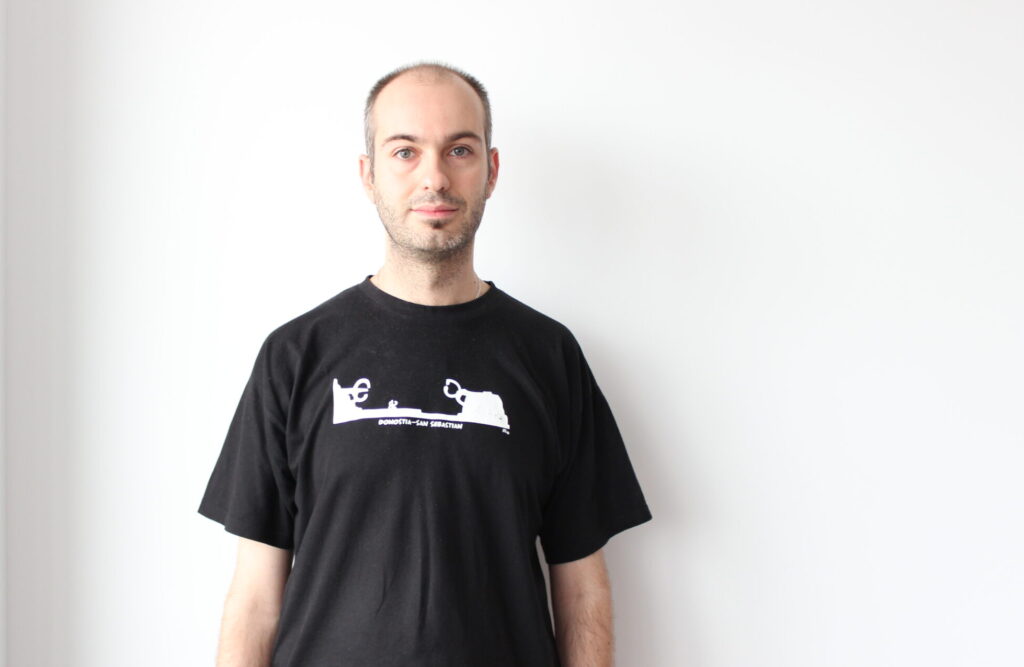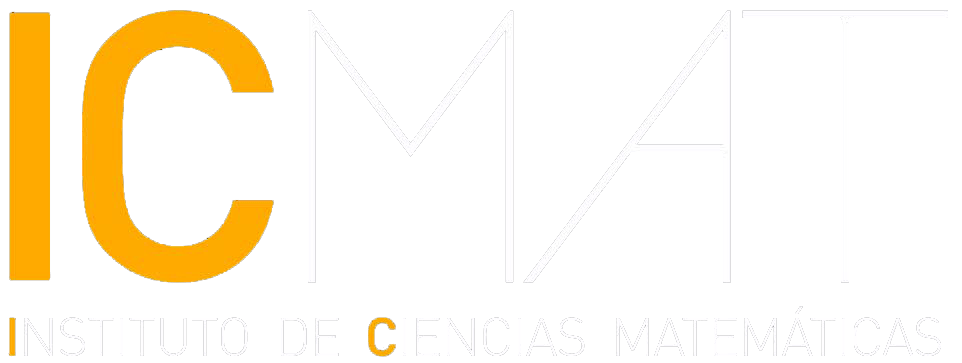The event takes place from July 10 to 12 at the University of Minho, in Braga (Portugal).

Daniel Peralta-Salas is an expert in dynamical systems, partial differential equations and differential geometry.
Ágata Timón García-Longoria (ICMAT)
From July 10 to 12, the great event of Portuguese mathematics will be held at the University of Minho, in Braga (Portugal): the National Meeting of the Portuguese Mathematical Society. Among the 12 invited speakers at the event is Daniel Peralta-Salas, research scientist at the Consejo Superior de Investigaciones Científicas (CSIC) at the ICMAT, an expert in dynamical systems, partial differential equations and differential geometry.
His lecture, “Two mathematical challenges in plasma physics”, will take place on Thursday, July 11 at 9:00. In it he will discuss two classical problems, which are still open, of the mathematics describing plasmas -such as solar plasma or that contained in nuclear fusion reactors- “From the mathematical point of view, plasmas are described by a combination of the Navier-Stokes equations and Maxwell’s equations, which gives rise to the so-called magnetohydrodynamics (MHD) equations”, explains the researcher. Specifically, he will present the so-called Grad conjecture -proposed in 1967, on the geometrical structure of the equilibria of the MHD equations- and a question posed by Parker in 1972, related to the phenomenon of magnetic relaxation and its topological obstructions.
On these two topics, Peralta-Salas and his collaborators have recently made progress: the construction of low-regularity counterexamples to Grad’s conjecture and the proof of Parker’s hypothesis in axisymmetric toroidal domains. In both results the use of modern tools of dynamical systems theory has been key.
Despite not being directly related to Portuguese mathematics, Peralta-Salas highlights two Portuguese contributions to dynamical systems that have influenced his research: “A theorem by Mario Bessa on the genericity of a certain dynamical property was crucial in one of my works, while Pedro Duarte’s extension of the so-called Newhouse theory to the conservative context was fundamental in another,” he says.
About the speaker
Daniel Peralta-Salas is a CSIC scientific researcher at the ICMAT, where, since 2017, he leads the Differential Geometry and Geometric Mechanics research group, areas in which he focuses his research. Among his distinctions, the Barcelona Dynamical Systems Prize that he obtained in 2015 stands out. From 2014 to 2019 he was principal investigator of a Starting Grant project of the European Research Council (ERC) on dynamical systems and partial differential equations.
Peralta-Salas, together with his collaborators, has developed a new theory to study geometrically complex structures in physical phenomena, which has been successfully applied to prove Arnold’s conjecture, in hydrodynamics, and Lord Kelvin’s conjecture, on knotted vortex tubes, among other problems. In addition, he constructed, theoretically, a three-dimensional fluid flow that can simulate a universal Turing machine, solving an open problem since 1991 on undecidable fluid particle trajectories. He also achieved an analytical construction of solutions to the equations of electromagnetism, encoding knots and torus links.
PhD in Mathematical Physics from the Complutense University (2006), after several postdoctoral positions, he is part of the ICMAT since 2010. He has published more than 100 research papers in journals such as Annals of Mathematics, Acta Mathematica, Duke Mathematical Journal or PNAS, and has been invited speaker in more than 120 international congresses, seminars and courses. Among them, he was plenary speaker at the 2016 European Congress of Mathematics (Berlin, Germany), gave the Floer Lectures at the Floer Center for Geometry in 2019 (Bochum, Germany) and was EMS Distinguished Speaker at the Nordic Congress of Mathematicians (Aalborg, Denmark) in 2023.
“Two mathematical challenges in plasma physics”, Daniel Peralta-Salas
Abstract
From the mathematical viewpoint, plasmas are described by a combination of the Navier-Stokes equations and Maxwell equations, which results in the so-called magnetohydrodynamics (MHD) equations. When the fluid is a perfect conductor, the resistivity of the plasma is neglected and it is described by the ideal MHD equations, which is a good approximation to study solar active regions and plasma confinement near equilibrium configurations. In this talk I will review two classical problems in mathematical plasma physics that remain open. The first one concerns the geometric structure of MHD equilibria (Grad’s conjecture, 1967) and the second one is related to the phenomenon of magnetic relaxation and its topological obstructions (Parker, 1972). Recent advances by the speaker and collaborators include the construction of counterexamples of low regularity to Grad’s conjecture, and the proof of Parker’s hypothesis in axisymmetric toroidal domains. The use of modern tools from the theory of dynamical systems (KAM, Newhouse phenomena) is key for both results.
This content has been automatically translated. The original text may differ slightly.
